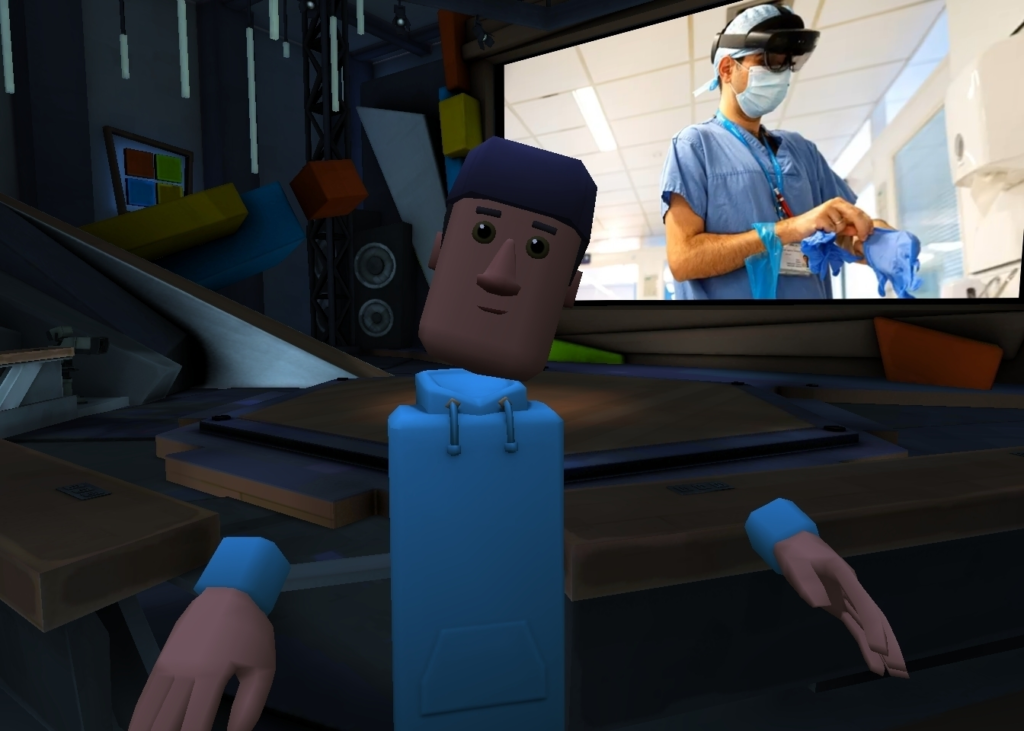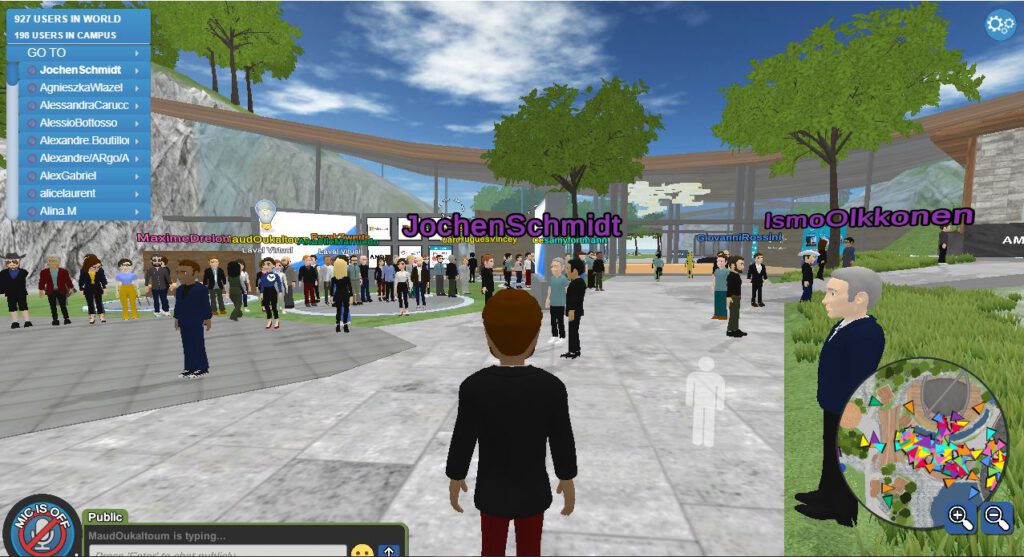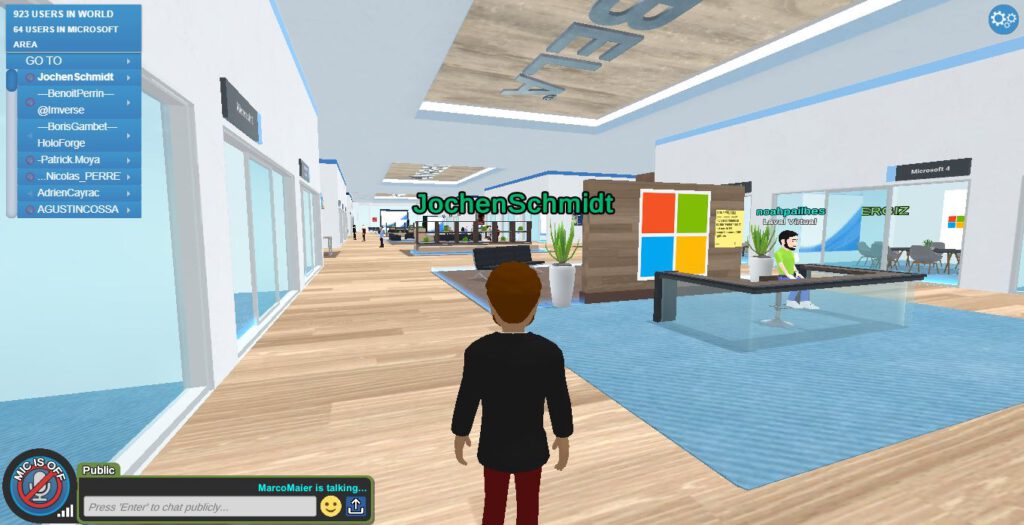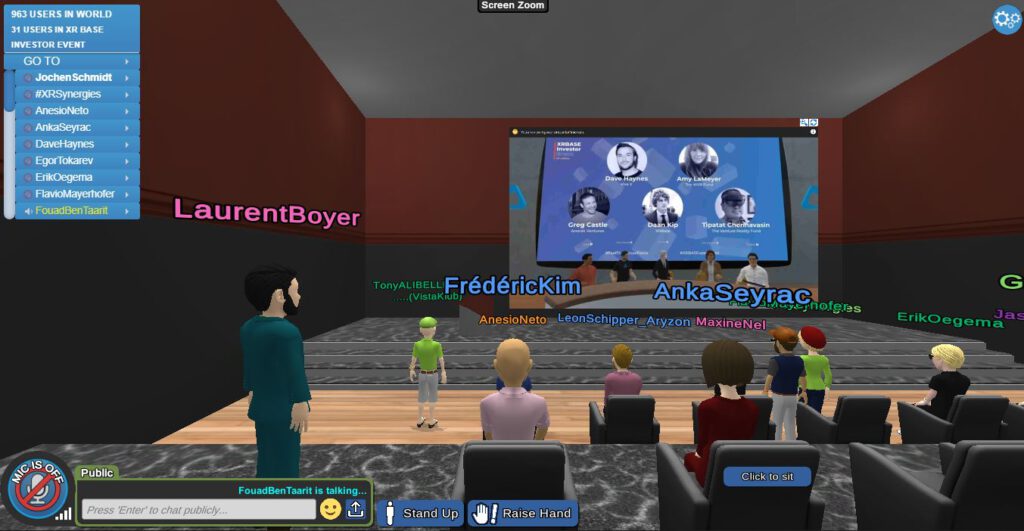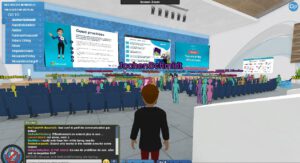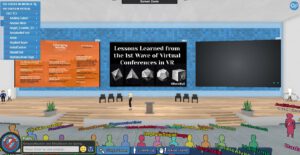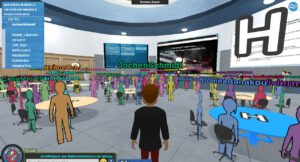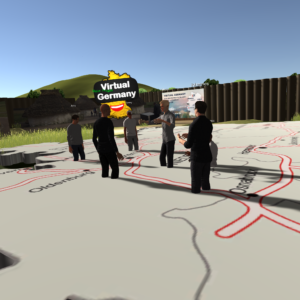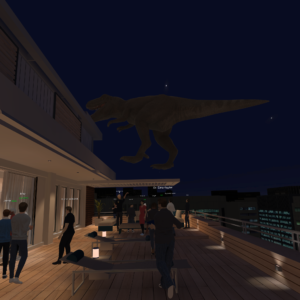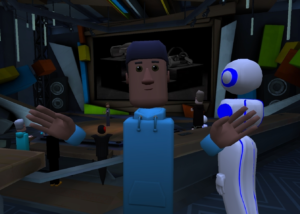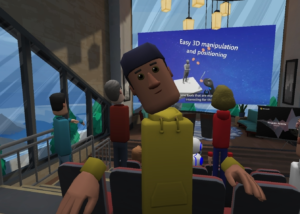Since the pandemic outbreak in early 2020, we have seen many cancellations of conventions, trade shows and marketing events. After some improvisations for setting up provisionary online replacements for these cancelled events, we now seem to have entered a ‘new normal’ of online conventions, marketing video streams and promotional webinars. Some of these trends may persist even in a post-pandemic future. For VR, this opened up a whole new playground for virtual meeting platforms, demonstrating effectively the strengths and weaknesses of this new medium for social distancing and virtual approximation.
Firstly, the year of 2020 VR conventions started with a bummer: Superdata presented a rather reserved outlook of growth perspectives for the XR sector at XR Immersive Enterprise‘s digital edition. Due to pandemic production shutdowns VR is supposed to not see any growth before next year with this year’s revenues falling back on the level of 2018. Bad news , indeed, only being topped by even more sinister outlooks for business closings in LBE VR segments. In a spirit of overcoming an intermediate situation, the conference was transmitted entirely in video streams. The discussion of training scenarios remained the traditional focus of enterprise VR.

While the digital edition of XR Immersive Enterprise continued doing business as usual in a streaming version, the traditional French annual VR convention in Laval went completely virtual. Every video presentation and video panel discussion was broadcasted in Laval Virtual, an interactive 3D multiuser platform, ressembling a bit the good old times of VRML in the 1990’s. You enter the world with an avatar character, walking on a simulated fair ground from conference rooms to meeting rooms, trade booths and party places like in a multiuser online gaming world. You literally had to go to the respective virtual location to follow the conference stream of your interest, where you could meet other participants in the auditorium, ask questions to the presenter in the chat, exchange contacts with your neighbor seats or make up a RDV in a separated meeting room.
The conference basically took place as before, only on a simulated fairground with video broadcasts. Laval VR traditionally centers around scientific topics, industrial applications and cultural institutions. But this time, the pandemic situation shifted interest also to Esports and tourism as upcoming VR replication fields. Apart from a rather successful translation of a real-world convention into a digital twin convention, the ubiquitous accessibility from any computer or mobile screen had quite an effect: the number of participants increased from the usual few hundreds to more than 10000 this year, all primarily motivated by having an exchange on things VR.
The networking possibilities of the virtual world were even more effective in recent Meetup sessions when local chapters came together for the first time on a national level in Virtual Germany and AWE Nite. This time, the whole meetup session was placed directly into VR on the Engage platform or on Mozilla’s WebVR Hubs. The Engage event brought together regional interest groups for VR in a similar way like HTC organized their VR convention on the same platform. You could switch between several rooms to follow on-stage powerpoint presentations on social VR topics which were open for discussion afterwards. You were supposed to wear a headset or you could use the desktop app to join the conversation. The AWE VR Meetup on Mozilla Hubs demanded a headset for direct participation, but you could as well follow a flatscreen streaming on Twitch.
Both meetup sessions not only managed to translate their physical meetings into a virtual happening, they both also achieved an expansion of their local gatherings into broader online accessibility. But the virtualisation also showed some restrictions on both platforms: Mozilla Hubs only supports a limited amount of data streams for a fluent realtime experience, forcing either to decrease the number of participants or to lower the visuals of the meeting environment; and Engage gave me quite a headache for audio problems when interfering with other speakers in the same room without an option to adjust my spatial audio settings for lowering nearby voices.
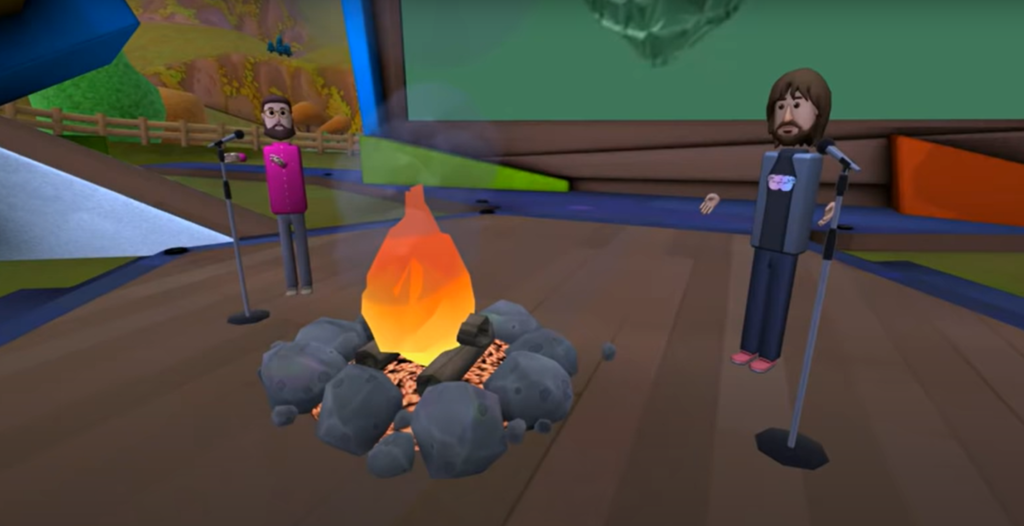
Microsoft used AltspaceVR for it’s Mixed Reality Dev Days, showing off Hololens2 features in video presentations, discussing MR application scenarios among avatar participants and displaying notorious firechat rituals on a virtual stage with a virtual camping fire. Access was possible either by headset or by using the flatscreen application. While the virtualisation of video presentations emphasizes the event character of coming together, I could not really make many uses of my virtual avatar for connecting on a satisfying level – and the resolution quality of VR headsets puts into question their suitability for common flatscreen projections.
In a session on prototyping with Microsoft’s creation tool Maquette the presenter operated the software in realtime in VR for demonstration, but I followed his 3D modelling activities on a 2D video screen, sitting in a simulated 3D auditorium with my avatar – whereas I wore a stereoscopic VR headset in my actual living room. In this case, the simulation features of VR play against the medium’s immersive strengths whenever the experience is channeled back into a traditional media communication – like in so many conventional cases. It may be better to stay flat where communication is flat, and to go virtual where there is a need for spatial and physical connection – in a safe and surrogated manner.
